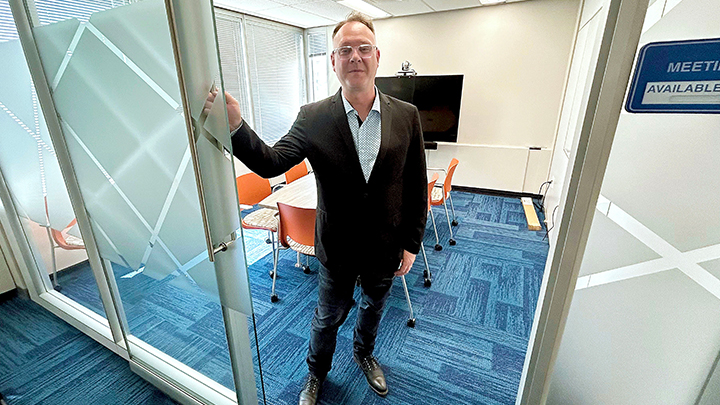
August 15, 2025

Jesse Tutt, program director with Intelligent Automation, and his team have been supporting the automation of tasks in areas across the health system — and encourages people with automation ideas to reach out to explore the opportunity. Supplied.
Story by Heather Kipling | Photo supplied
RED DEER — Since first automating simple mouse clicks and mimicking keystrokes to take on repetitive and often mundane work, Alberta Health Services' (AHS) Automation Program has freed up years of staff time.
In fact, as of the end of May, the program team has freed up 250 years of staff time across the organization — time that healthcare staff are using to focus on other tasks and skills to provide quality patient care.
"Automating 250 years of work means more time for staff to focus on patient care, strategic priorities, and the human connection that defines healthcare," says Erin O'Neill, AHS’ Senior Vice President of Finance and Shared Services.
"I’m incredibly proud of the Automation Program team and grateful to every staff member who has embraced these innovative solutions."
The milestone reflects the program’s championing of intelligent automation which combines the power of artificial intelligence and machine learning to automate as many steps as possible in business processes. By automating many of the repetitive, time-consuming tasks such as job-offer letters, completing forms, financial spreadsheets, patient refunds, staffing documents and more, staff are freed up to support healthcare delivery in other ways.
"We’ve come a long way since we first started," says Jesse Tutt, program director, Intelligent Automation. “Automations are becoming more commonplace — and we’re seeing the benefits in multiple areas across the health system that benefit not only staff but patients alike.
"It is very exciting to be a part of."
From automatically generating offer letters and streamlining onboarding for new hires to creating employee IDs, summarizing pages of clinical notes into review-ready reports and loading handwritten school consent forms, intelligent automation is now being used by Human Resources, Provincial Staffing Services, Information Technology (IT), and Contracting, Procurement and Supply Management (CPSM), Finance, Capital Management, Public Health, Workplace Health & Safety and more.
"One of the areas we’ve supported was to extract all the patient data in eClinician before it was turned off," says Tutt. "Extracting data from more than seven million files with total accuracy would have taken a team of 60 at least a year to complete. Using automation, we were able to see this work completed in months."
And as the use of Artificial Intelligence continues to soar, there’s no slowing down for the automation team, adds Glen Shortt, acting senior director with IT and co-chair of AHS’ Automation Steering and Oversight Committee.
"We’re now entering a new era with AI-driven solutions that extend the value of automation even further," he says. "Recently we’ve expanded our program to include AI-driven automations to check the appropriateness of MRI referrals for patients with knee pain, to extract data from fax referrals for DI, Rheumatology and GI CAT and loading it into Epic, and to categorize physician notes from mammography patient visits. This brings even greater value and intelligence to how we work."
"I’m eager to see how this work will continue to evolve and support staff across the province."